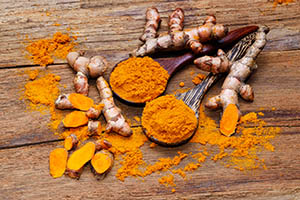You’ve heard me talk about glutathione before.
I use it every day at the Sears Institute for Anti-Aging to strengthen a patient’s immune system and help prevent the most common chronic diseases we face today – like arthritis, Alzheimer’s, high blood pressure, heart and lung disease, cancer and diabetes.
In fact, this master antioxidant is so powerful, it has been proven in animal studies to increase lifespan by up to 30%.1
Another study found that those with the highest levels commonly live well past the age of 100.2
But this age-reversing antioxidant is also an under-the-radar skin miracle…
 ="280" />
="280" />
Glutathione is one of
Cindy Crawford’s
anti-aging secrets.
In fact, it’s the secret that helps certain Hollywood celebrities look better today than they did a decade ago. Today we know glutathione is the anti-aging secret of celebrities like Cindy Crawford, Kim Kardashian, Jane Fonda and Brad Pitt.
And the research backs up what they claim. Peer-reviewed studies have found that glutathione can:
- Prevent DNA damage from UV ray overexposure 3
- Smooth away wrinkles 4
- Brighten skin 5
- Eliminate age spots and lighten skin 6
But perhaps the biggest skin care benefit is that this super-antioxidant boosts collagen production and increases skin elasticity.7,8
Collagen is the most abundant form of protein in your body. When you’re young, your body makes a lot of it. But as you age, you produce less and less. And this lack of collagen results in the visible signs of aging – including sagging skin that’s lost elasticity, wrinkles, and a rough, dull appearance.
Increasing collagen production encourages cell turnover and minimizes facial muscle contractions, which contributes to the development of wrinkles.
The result is firmer, plumper, more youthful looking skin.
In one study, women who naturally increased their levels of collagen had improved skin elasticity after only eight weeks. They also had better skin moisture and less roughness. And they had fewer signs of accelerated aging.9
A second study published in the journal Clinical, Cosmetic and Investigational Dermatology found that volunteers who supplemented with glutathione increased skin elasticity and significantly reduced wrinkles in only 12 weeks compared to the control group.10
Glutathione levels decrease naturally as you age – at the rate of about 1% a year. By the age of 60, you only have about half of what you should. Today’s toxic environment and our exposure to chemicals, pollution, alcohol and even Big Pharma medications depletes levels even further.11
The #1 most effective way to increase glutathione and reverse aging
The best way to increase glutathione is through IV therapy.
It’s the easiest way to raise levels fast. Getting glutathione through an intravenous drip allows the antioxidant to bypass the digestive process and go directly into your cells. That means the bioavailability from IV is 100%.
If you are interested in the age-reversing effects of glutathione through IV therapy, please call my staff at 561-784-7852.
Boost glutathione from home…
If you can’t get to the Sears Institute, you can easily increase levels at home.
Here’s what I suggest…
- Supplement with N-Acetyl Cysteine (NAC). This amino acid is a precursor to glutathione. In one study, patients were given 600 mg of NAC a day for three months. At the end of the three months, their blood plasma levels of glutathione had increased by 38%.12
- Get glutathione from your diet. Choose foods high in glycine and cysteine, two more amino acids that increase glutathione production. The best sources are grass-fed meat and organ meat, pastured eggs and wild-caught fish. These amino acids are also found in yogurt, sunflower seeds, horseradish, broccoli, cauliflower, cabbage, red peppers and Brussels sprouts.
- Keep turmeric in your pantry. This powerful spice enhances the synthesis of glutathione. You can find turmeric’s active ingredient, curcumin, as a supplement. Take 500 mg twice a day.
To Your Good Health,

Al Sears, MD, CNS
1. Oh, S, et al. “Lifespan extension and increased resistance to environmental stressors by N-acetyl-L-cysteine in Caenorhabditis elegans.” Clinics (Sao Paulo). 2015 May;70(5):380-6.
2. Andersen H. “Lower activity of superoxide dismutase and high activity of glutathione reductase in erythrocytes from centenarians.” Age Aging. 1998;27:643-648.
3. Kwon D, et al. “Protective effect of glutathione against oxidative stress-induced cytotoxicity in raw 264.7 macrophages through activating the nuclear factor erythroid 2-related factor-2/heme oxygenase-1 pathway.” Antioxidants (Basel). 2019 Apr 1;8(4):82. doi: 10.3390/antiox8040082.
4. Watanabe F, et al. “”Skin-whitening and skin-condition-improving effects of topical oxidized glutathione: a double-blind and placebo-controlled clinical trial in healthy women.” Clin Cosmet Investig Dermatol. 2014; 7: 267–274.
5. Arjinpathana N, Asawanonda P. “Glutathione as an oral whitening agent: a randomized, double-blind, placebo-controlled study.” J Dermatolog Treat. 2012;23:97–102.
6. Arjinpathana N, Asawanonda P. Glutathione as an oral whitening agent: a randomized, double-blind, placebo-controlled study.” J Dermatolog Treat. 2012;23:97–102.
7. Weschawalit S, et al. “Glutathione and its antiaging and antimelanogenic effects.” Clin Cosmet Investig Dermatol. 2017 Apr 27;10:147-153.
8. Lue R, et al. “Glutathione regulates transforming growth factor-beta-stimulated collagen production in fibroblasts.” Am J Physiol Lung Cell Mol Physiol. 2004 Jan;286(1):L121-8.
9. Proksch E, et al. “Oral supplementation of specific collagen peptides has beneficial effects on human skin physiology: a double-blind, placebo-controlled study.” Skin Pharmacol Physiol 2014;27:47-55.
10. Weschawalit S, et al. “Glutathione and its antiaging and antimelanogenic effects.” Clin Cosmet Investig Dermatol. 2017 Apr 27;10:147-153.
11. Pizzorna J. “Glutathione.” Integr Med (Encinitas). 2014 Feb; 13(1): 8–12.
12. Bongers V, et al. “Antioxidant-related parameters in patients treated for cancer chemoprevention with N-acetylcysteine.” Eur J Cancer. 1995 Jun;31A(6):921-922.

